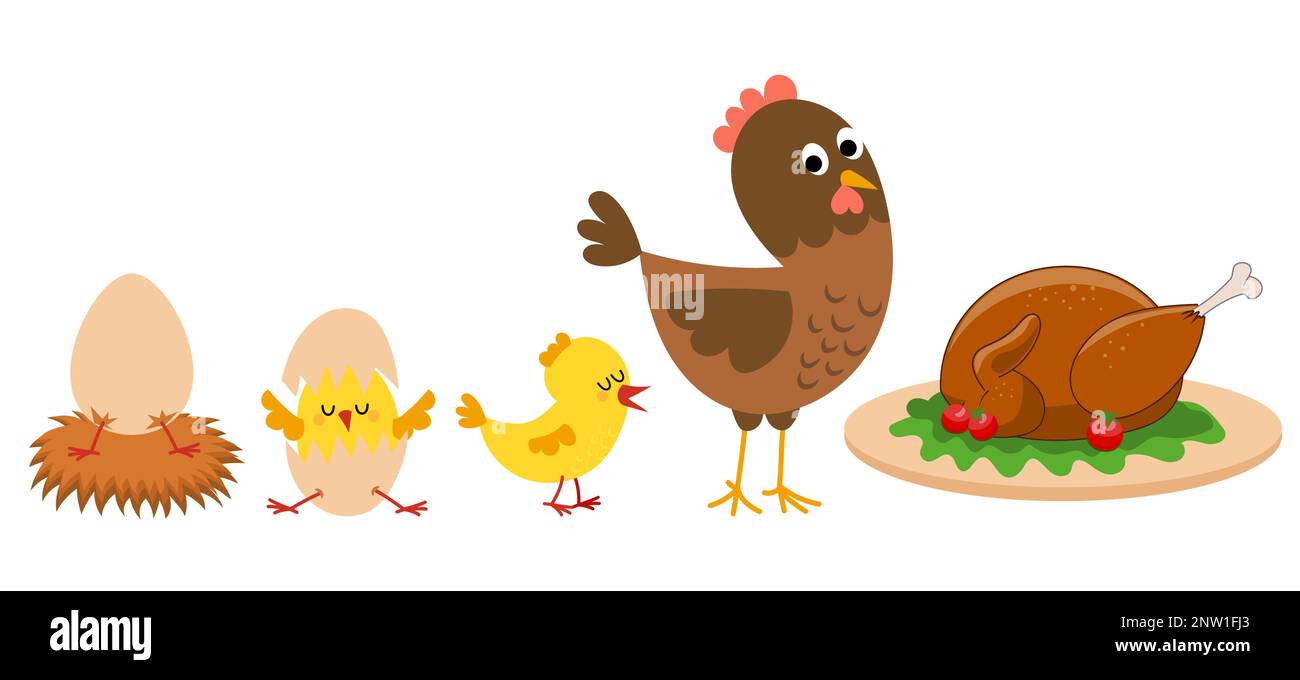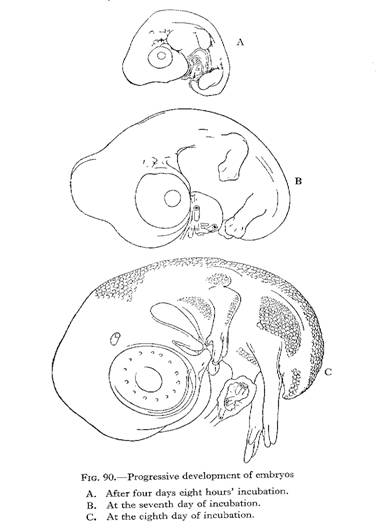Have you ever cracked open an egg for breakfast and wondered how this simple object could possibly transform into a chirping, feathery chicken? I’ve been raising backyard chickens for years now and I’m still amazed every time I witness this incredible process. The journey from egg to chick is nothing short of miraculous, and today I’m gonna share all the fascinating details with you!
The Beginning: Fertilization
It all starts with fertilization. Many people ask me, “Do you need a rooster for your hens to lay eggs?” The answer is no – hens will lay eggs regardless of whether a rooster is around. However, for an egg to develop into a chick, fertilization is absolutely necessary.
When a rooster and hen mate, they engage in what’s called “cloacal contact,” where the rooster transfers sperm to the hen. These sperm can actually live inside the hen for several weeks, ready to fertilize any eggs she produces during that time.
Interestingly, it’s perfectly safe to eat fertilized eggs as long as they’re fresh and haven’t been incubated. They look and taste just like unfertilized ones!
Inside the Hen: How Eggs Are Formed
Before we dive into embryo development, let’s understand how eggs form in the first place. The process is pretty amazing:
-
The Yolk: Everything begins in the hen’s ovary, which contains thousands of tiny ova (future egg yolks). When a yolk reaches the right size, it’s released into the oviduct.
-
The Egg White (Albumen): As the yolk travels through the oviduct, egg white forms around it over about three hours. This will provide cushioning and nourishment.
-
The Shell Membrane: Next comes a thin membrane layer, taking about 1.25 hours to develop. It sits between the egg white and outer shell.
-
The Shell: In the hen’s uterus (shell gland), the hard shell forms over approximately 19 hours. Did you know all eggshells start out white? Depending on the chicken breed, pigments may be added:
- Brown eggs: Pigment only coats the surface (inside is still white)
- Blue eggs: Pigment permeates the entire shell
- Green eggs: Combination of blue and brown pigments
- White eggs: No pigmentation at all
-
The Bloom: Finally, a protective layer called the bloom or cuticle is applied just before the egg exits. This natural barrier helps keep bacteria out and moisture in.
The entire process takes about 25 hours, and remarkably, as soon as a hen lays one egg, she begins forming the next!
The 21-Day Miracle: Embryo Development
Once fertilized the real magic begins. The embryo’s development follows a precise 21-day timeline that transforms a single cell into a complete chick. Let’s break down this incredible journey
Days 1-3: Foundation Building
Day 1 After fertilization, the zygote (fertilized egg cell) undergoes cleavage, rapidly dividing into many cells. A small group called the blastoderm forms on top of the yolk. This tiny cluster contains all the genetic instructions needed to build an entire chicken!
Day 2: The heart and blood vessels begin to form. Incredibly, the heart starts beating this early!
Day 3: The neural tube develops, which will become the chick’s brain and spinal cord. The embryo also organizes into three important layers:
- Ectoderm (outer layer): Will form nervous system, skin, and feathers
- Mesoderm (middle layer): Develops into muscles, bones, and organs
- Endoderm (inner layer): Becomes the digestive system
Days 4-7: Taking Shape
Day 4-5: Feather buds begin to form, marking the start of feather development.
Day 5-7: Legs begin to bud, and the body blueprint continues to emerge. The embryo grows rapidly, utilizing nutrients from the yolk.
Days 8-14: Organ Development
Day 9: The beak begins to form within a specialized structure called the beak primordium.
Day 14: The chick develops lungs that allow it to breathe air within the egg. The embryo continues to absorb yolk for nutrition and growth.
Days 15-21: Preparing for Hatching
Day 15-18: The chick continues growing and moving inside the egg. These movements help strengthen its muscles in preparation for hatching.
Day 19-20: The remaining yolk is drawn into the chick’s body through the navel, providing a final nutritional reserve. The chick rotates, positioning its head toward the air sac at the blunt end of the egg.
Day 21: Hatching day! The fully formed chick releases enzymes that soften the shell. Using its “egg tooth” (a temporary sharp tip on its beak), the chick begins to break through the shell in a process called “pipping.” After creating a small hole, it continues pecking and rotating until it can squeeze through. This hard work can take many hours!
Finally, a wet, exhausted chick emerges. Within hours, it dries off, its downy feathers fluff up, and it’s ready to explore its new world!
The Perfect Environment: Incubation
For this incredible transformation to occur, the egg needs specific conditions:
- Temperature: A steady 99-102°F (maintained by a broody hen or incubator)
- Humidity: Carefully regulated throughout the process
- Ventilation: Gas exchange through tiny pores in the shell provides oxygen and releases carbon dioxide
- Turning: Regular rotation prevents the embryo from sticking to the shell and ensures uniform heating
How Does the Chick Survive Inside the Egg?
You might wonder how a growing embryo gets everything it needs while encased in a shell. The egg is actually a perfectly designed life-support system:
- Nutrition: The yolk provides protein and fats that are gradually absorbed
- Oxygen: The chick relies on a specialized membrane (chorioallantoic membrane) to extract oxygen through the porous shell
- Protection: The shell and albumen cushion and safeguard the developing embryo
- Anchoring: Chalazae (the white stringy bits you see in raw eggs) help anchor the yolk in place
- Breathing: An air cell provides oxygen for breathing just before hatching
Common Questions About Egg Development
Q: What happens if an egg isn’t fertilized?
A: It contains only yolk and white and won’t develop – these are the eggs we typically eat.
Q: What causes embryo death during incubation?
A: Common causes include improper temperature, inadequate humidity, poor ventilation, bacterial contamination, or genetic defects.
Q: What do chicks eat after hatching?
A: Chicks need high-protein starter feed and fresh water. The absorbed yolk provides nutrients for the first couple days after hatching.
Q: How does the chicken get oxygen inside the egg?
A: The eggshell has thousands of tiny pores that allow oxygen in and carbon dioxide out.
Final Thoughts
I find the transformation from egg to chicken absolutely fascinating. This 21-day journey represents one of nature’s most remarkable processes – a complete life form developing from a single cell into a complex organism with bones, muscles, organs, and feathers.
Next time you crack an egg for breakfast or spot a mother hen sitting patiently on her clutch, take a moment to appreciate the incredible biology happening right before your eyes. From a simple egg to a chirping ball of fluff, it’s truly one of nature’s greatest miracles!
What aspects of this egg-to-chick transformation do you find most fascinating? I’d love to hear your thoughts in the comments below!

Fertilisation and early development

Fertilisation of the germinal disc by the sperm takes place in the infundibulum about 15 minutes after its holding follicle has released the yolk. Cell division to create the new embryo starts about five hours after fertilisation and continues while the egg passes along the oviduct and after the egg is laid. It is generally said that the hen’s egg takes 21 days of favourable incubation conditions for the chicken to develop and hatch. However, this development takes 22 days – one day in the oviduct and 21 days in the incubator or nest.
When the sperm cell (with half the required chromosomes) fertilises the female egg cell (with the other half of the required chromosomes) it forms the zygote, which is a single cell with the correct number of chromosomes. About five hours after fertilisation the zygote enters the isthmus and it is here that the new embryo starts to develop by simple cell division. By the time the egg leaves the isthmus, the zygote, now called the blastoderm or embryo, comprises eight cells and after four hours in the uterus it has grown to 256 cells.
Embryology of the chicken
The embryology of the chicken is the development of the chicken inside of the egg. Hatchery managers need to be able to differentiate between normal and abnormal embryos and identify possible causes of embryo mortality during incubation.
